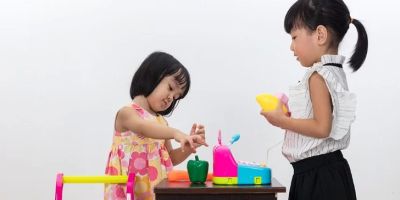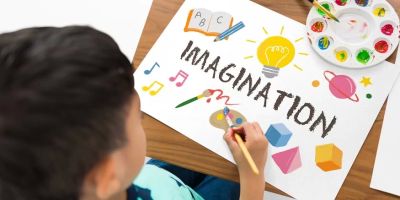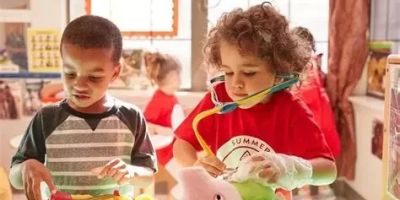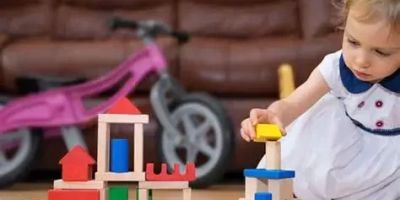Embracing Cultural Diversity in Your Toy Collection
Why Cultural Diversity Matters in Toys
As a parent, educator, or collector, the toys we choose for children play an essential role in shaping their worldviews. When I began curating a toy collection for my own children, I quickly realized that I wanted to provide them with more than just entertainment—I wanted to offer them an opportunity to experience the diverse world around them. The idea of cultural diversity in toys struck me as an essential way to encourage empathy, understanding, and inclusivity from an early age.
In today's globalized world, children are exposed to many different cultures, beliefs, and lifestyles. Therefore, it's crucial to introduce them to diverse perspectives and experiences through their toys. Incorporating cultural diversity into a toy collection helps children appreciate the beauty of different cultures, develop a sense of respect, and build awareness of the world beyond their immediate surroundings. When children interact with toys that reflect various cultures, they learn to appreciate differences, fostering a more inclusive mindset that benefits both individuals and society.
This article explores how you can thoughtfully incorporate cultural diversity into your toy collection. Whether you're a parent trying to diversify the toys for your child or a collector aiming to showcase global cultures through play, these insights will help guide your journey to creating a rich, diverse toy collection.
1. Choosing Culturally Diverse Dolls and Action Figures
One of the most impactful ways to incorporate cultural diversity into your toy collection is through dolls and action figures. These toys often represent different ethnicities, races, and backgrounds, allowing children to see themselves reflected in a toy while also learning about others. When I started building my collection, I made a point of finding dolls from various cultural backgrounds—this included dolls with different skin tones, hair types, and traditional clothing representing various regions and ethnicities across the globe.
For example, there are doll lines that include characters from Africa, Asia, South America, and Indigenous cultures, each designed with attention to detail in their clothing, hairstyles, and accessories that reflect their respective cultures. By introducing these dolls into your child’s playtime, you’re encouraging them to appreciate global diversity and empowering them to see the value in all cultures.
When selecting culturally diverse dolls, it's important to consider the level of accuracy and respect in their representation. Look for dolls that are designed with input from cultural experts or community members to ensure authenticity. These toys can become more than just playthings—they can spark conversations about culture, history, and tradition, helping children understand the world around them in a more meaningful way.
2. Including Multi-Language Toys
Another great way to foster cultural diversity in your toy collection is through multi-language toys. Language is a key component of culture, and learning a second or third language can open up a world of opportunities for children. Multi-language toys—such as bilingual talking dolls, educational games, or books—expose children to new languages and provide them with the opportunity to learn basic words, phrases, and concepts from different cultures.
When I bought my first bilingual toy for my daughter, I was surprised at how quickly she became intrigued by learning Spanish. The toy didn’t just teach her new words; it also introduced her to the rhythm, tone, and pronunciation of the language, which made learning feel natural and fun. These kinds of toys give children a head start in language acquisition while also allowing them to feel connected to cultures beyond their own.
Look for toys that feature a variety of languages or cultural expressions. Some toys incorporate songs, nursery rhymes, or traditional stories in different languages, while others may feature buttons or apps that allow children to switch between languages. These types of toys can help broaden a child’s understanding of language, and by extension, global culture. Language is one of the simplest and most enjoyable ways to embrace diversity in your toy collection.
3. Incorporating Global-Themed Puzzles and Games
Puzzles and games are fantastic tools for encouraging learning while also introducing children to different cultures. There is a wide range of puzzles and games that feature global themes—from maps of the world to games about international landmarks, historical figures, or traditional customs. These toys engage children in an interactive way while teaching them about various countries and cultures.
One of my favorite experiences with global-themed games was introducing my children to a world map puzzle. As we pieced the puzzle together, I pointed out the different continents and countries, talking about their unique cultures, languages, and traditions. This simple activity sparked a sense of curiosity in them, encouraging them to ask questions and learn more about the world.
Look for educational games that focus on global cultures, from board games that teach geography and history to card games featuring famous landmarks or cultural trivia. These toys provide an exciting way to educate children about the diversity of our world while keeping them engaged and entertained. Games and puzzles are excellent ways to not only have fun but also reinforce the importance of cultural knowledge and understanding.
4. Celebrating Festivals with Cultural Toys
Another enjoyable way to incorporate cultural diversity into your toy collection is by celebrating the festivals and traditions of various cultures. Around the world, different cultures observe unique holidays that are rich in history, symbolism, and celebration. By including toys that reflect these celebrations, such as traditional costumes, musical instruments, or decorative items, you can teach children about these events in a fun and engaging way.
I have introduced my children to Diwali, Chinese New Year, and Day of the Dead by collecting toys that represent the customs and festivities associated with each. For example, there are toys that feature colorful lanterns for Chinese New Year or intricately designed skulls for Day of the Dead. These toys not only serve as decoration but also as an educational tool to understand the significance of the festivals, rituals, and the cultural values they represent.
By celebrating these holidays with toys that reflect different cultures, you’re giving children a deeper understanding of global customs and showing them the beauty of diversity. It’s an exciting and creative way to introduce cultural awareness while sharing the joy of traditions from all over the world.
5. Supporting Ethically Made and Fair Trade Toys
As a collector, I’ve learned that how toys are made can be just as important as what they represent. Supporting ethically made and fair trade toys ensures that the toys in your collection are produced in a manner that respects both the environment and the people who create them. Many artisans around the world create beautiful, handcrafted toys that reflect their cultural heritage, and by purchasing these items, you’re supporting sustainable practices and helping preserve traditional crafts.
Fair trade toys often come from small, community-based businesses in developing countries, where artisans are paid fair wages for their work. These toys are not only unique and culturally significant but also offer a direct link to the people and communities behind them. I have found that collecting these toys has allowed me to support meaningful work while also learning about the cultures from which they originate.
When building your toy collection, consider seeking out products that are ethically made or fair trade certified. This not only adds a layer of cultural authenticity to your collection but also contributes to the welfare of artisans and their communities around the world.
6. Creating a Diverse Toy Collection: Practical Tips
Building a culturally diverse toy collection doesn’t have to be overwhelming. With some intentional choices and a little research, you can gradually curate a collection that celebrates diversity while remaining fun and educational. Here are a few tips I’ve used in my journey:
- Research cultural significance: Before purchasing, take the time to learn about the cultural background of the toy to ensure it is authentic and respectful.
- Incorporate a variety of materials: Look for toys made from different materials, such as wood, fabric, or clay, which can add richness to your collection and represent traditional craftsmanship.
- Focus on inclusion: Choose toys that represent various cultures, ethnicities, and abilities to ensure your collection reflects a wide range of experiences.
- Use the toys as conversation starters: Share stories or facts about the cultures represented in your collection with your children, creating meaningful discussions about diversity.
By following these tips, you can create a diverse and thoughtful collection that introduces children to the many cultures that make up our world. And remember, a toy collection can be more than just fun—it can be a tool for fostering empathy, awareness, and respect in the next generation.





